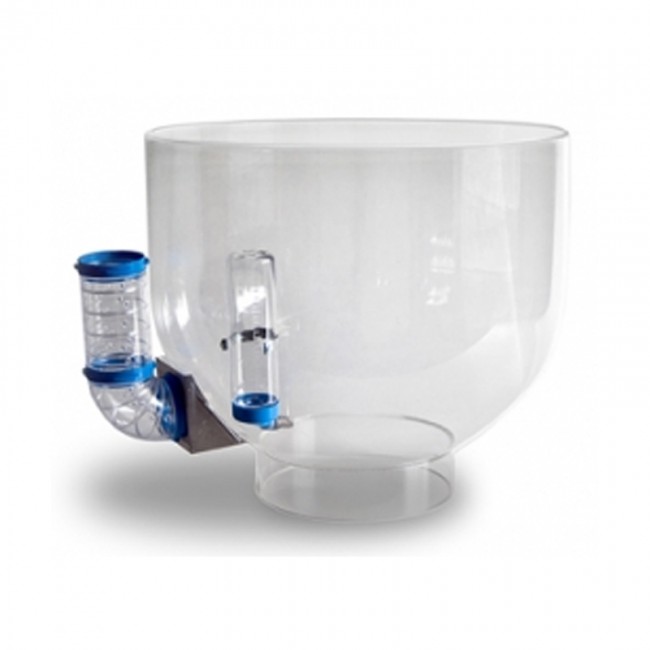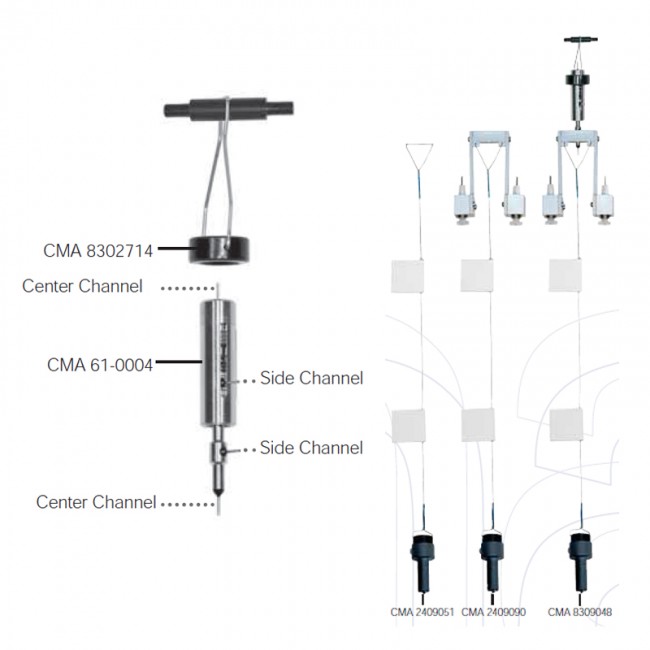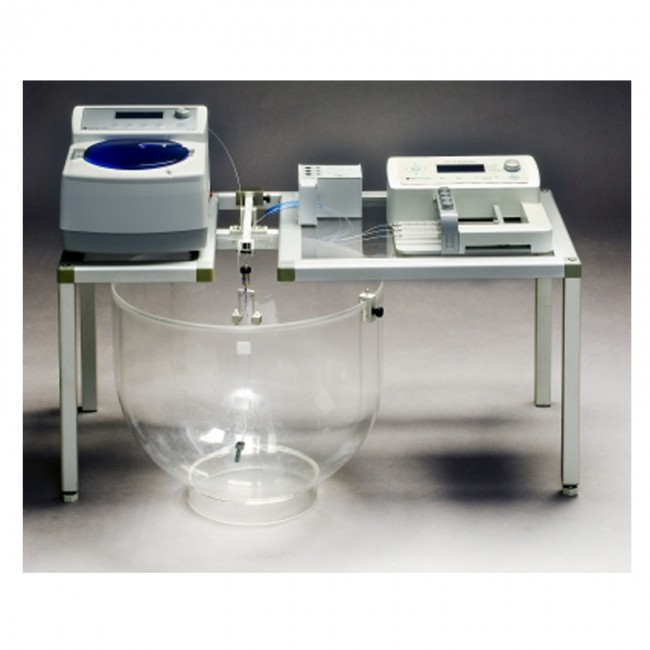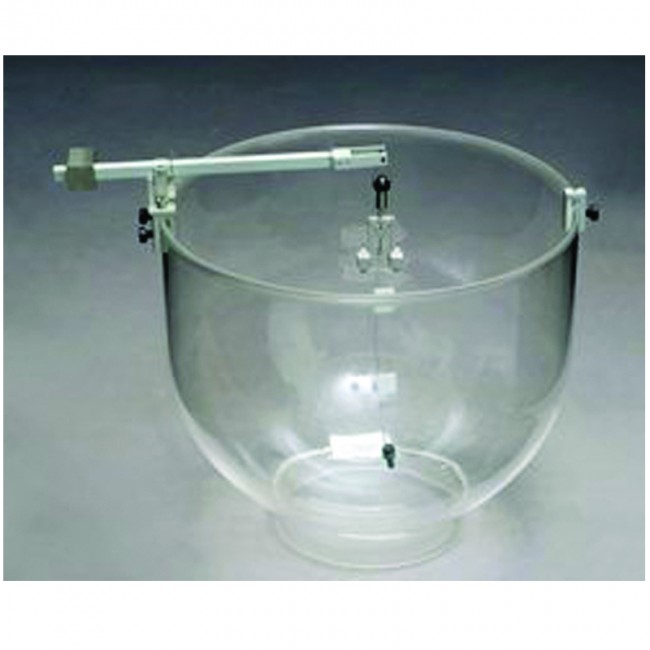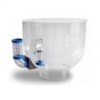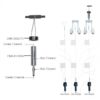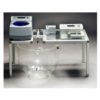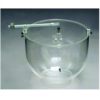CMA 120 System for Freely Moving Animals
The CMA 120 System for Freely Moving Animals enables microdialysis studies on conscious, small laboratory animals over long periods of time.
- Balance arm with dual channel swivel
- Secures tubing away from the animal and prevents twisting
Product Enquiry
If you would like to send us an enquiry about this product, please click the button below, fill in the form and submit.
Product Enquiry
CMA 120 System for Freely Moving Animals
The CMA 120 System for Freely Moving Animals enables microdialysis studies on conscious, small laboratory animals over long periods of time.
CMA 120 System for Freely Moving Animals includes:
- CMA 120 plastic bowl
- CMA 120 swivel assembly
- CMA 120 balance arm
- Plastic collar (100 pcs)
- Tubing adapters (10 pcs)
- FEP tubing (1 m)
- Vial, plastic 300 μl (25 pcs)
- Caps, plastic (25 pcs)
The CMA 120 instrument can be used in combination with any one of the microdialysis systems. The microdialysis probe is attached to a CMA Syringe Pump, the CMA 110 Liquid Switch, and to any of the CMA 142 or CMA 470 collection devices via a dual channel swivel.
The swivel is mounted on the balancing arm allowing free movement of the animal. The swivel brace holds a wire with a collar connector and two holders for 300 µl plastic vials.
The wire attached to the animal collar turns the swivel and supports the tubing. Manual fraction collection is used when two microdialysis probes are implanted, or when microdialysis is combined with local injection via one channel of the swivel.
The CMA 120 Bowl with Food and Water Containers is used in studies where a freely moving animal will be contained for longer periods of time. The additions of these containers allow the animal to feed and drink ad libitum. The food container and water bottle are arranged on the outside of the bowl so as not to disturb the movement of the tethered animal when inside the bowl.
Both containers are easily removed for cleaning and refilling.
Ordering Information
| Product Name | Item # |
| CMA 120 System for Freely Moving Animals | CMA8309049 |
| CMA 120 Bowl with Food and Water Containers (Height 360 mm, Diameter 400 mm) | CMA8309672 |
| CMA 120 System without Bowl | CMA8409029 |
| CMA 120 Plastic Bowl (Height 360 mm, Diameter 400 mm) | CMA8309031 |
| CMA 120 Complete Swivel Assembly | CMA8309048 |
| CMA 120 Swivel Assembly without Swivel | CMA2409090 |
| CMA 120 Wire Set with Collar Connector | CMA2409051 |
| CMA 120 Balance Arm | CMA8309032 |
| CMA 120 Swivel Pin and Gimbal | CMA8002714 |
| CMA 120 Plastic Vial Holder | CMA2409069 |
| CMA 120 Wire Attachment | CMA2409091 |
| Clamp for CMA 120 Vial Holder | CMA8409033 |
| Plastic Animal Collar (pkg. of 100) | CMA7431059 |
| Tubing Adapters for CMA Microdialysis Probes, pkg. of 10 | CMA3409500 |
| FEP Tubing, 0.12 mm ID, 1 m, pkg. of 1 | CMA3409501 |
| FEP Tubing, 0.12 mm ID, 1 m, pkg. of 10 | CMA8409501 |
| CMA 120 Instrument Table | CMA8309046 |
Journal Articles
Recent Selected Publications
Paasonen, J. et al., 2017. Dose-response effect of acute phencyclidine on functional connectivity and dopamine levels, and their association with schizophrenia-like symptom classes in rat. Neuropharmacology, 119, pp.15–25.
Jin, W.-S. et al., 2017. Peritoneal dialysis reduces amyloid-beta plasma levels in humans and attenuates Alzheimer-associated phenotypes in an APP/PS1 mouse model. Acta Neuropathologica, pp.1–14.
Bank, J.H.H. et al., 2017. Gene expression analysis and microdialysis suggest hypothalamic triiodothyronine (T3) gates daily torpor in Djungarian hamsters (Phodopus sungorus). Journal of Comparative Physiology B, pp.1–12.
Xiao, B.-X. et al., 2016. Pharmacokinetic profiles of the five isoflavonoids from Pueraria lobata roots in the CSF and plasma of rats. Journal of Ethnopharmacology, 184, pp.22–29.
Lindqvist, A. et al., 2016. In vivo Functional Evaluation of Increased Brain Delivery of the Opioid Peptide DAMGO by Glutathione-PEGylated Liposomes. Pharmaceutical Research, 33(1), pp.177–185.
He, Y. et al., 2016. In situ derivatization-ultrasound-assisted dispersive liquid–liquid microextraction for the determination of neurotransmitters in Parkinson’s rat brain microdialysates by ultra high performance liquid chromatography-tandem mass spectrometry. Journal of Chromatography A, 1458, pp.70–81.
Ortega, J., Meana, J.J. & Callado, L., 2016. In Vivo Brain Microdialysis of Monoamines. In R. Luján & F. Ciruela, eds. Receptor and Ion Channel Detection in the Brain. Neuromethods. Springer New York, pp. 415– 434. Available at: http://dx.doi.org/10.1007/978-1-4939-3064-7_25.
Qi, D. et al., 2016. Quantification of Dopamine in Brain Microdialysates with High-Performance Liquid Chromatography–Tandem Mass Spectrometry. Analytical Sciences, 32(4), pp.419–424.
Wang, F. et al., 2015. Sensitive Determination of Amantadine in Microdialysis Samples from Rat Plasma by HPLC with Fluorescence Detection. Journal of Liquid Chromatography & Related Technologies, 38(17), pp.1622–1628.
Keeler, G.D., Durdik, J.M. & Stenken, J.A., 2015a. Effects of delayed delivery of dexamethasone-21- phosphate via subcutaneous microdialysis implants on macrophage activation in rats. Acta Biomaterialia, 23, pp.27–37.

